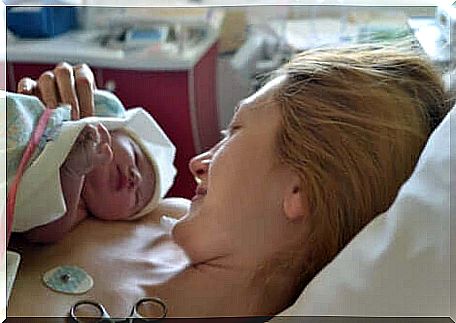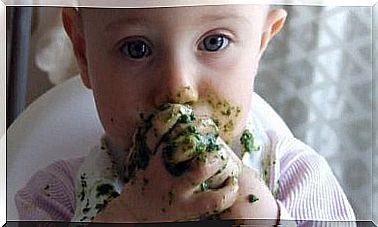Neonatal Sepsis: Causes And Consequences – Being Parents

Neonatal sepsis is the invasion of the newborn’s blood by microorganisms. These microorganisms generally correspond to different types of bacteria. Although this is a condition that can affect anyone, two population groups are particularly vulnerable: newborns and the elderly.
Neonatal sepsis produces a frame with a very varied and unspecific symptomatology, especially in babies. We must add to this the fact that the baby does not yet know how to express what he is feeling.
Either way, this is a serious problem that can quickly lead to organ failure and death. We must therefore be attentive to the slightest alarm signal presented by our baby. Here we’ll tell you everything you need to know about neonatal sepsis.
What is neonatal sepsis?
As just mentioned, sepsis is the infection of a person’s blood with microorganisms. When we talk about neonatal sepsis, we are referring to this infection in newborns, and more specifically newborns under three months of age.
Babies at this age are a particularly vulnerable group because their immune system is not yet mature and it cannot defend itself against infections in the same way as the immune system of a healthy adult.

Some classifications divide neonatal sepsis into two categories. On the one hand, we would find early neonatal sepsis, which would occur in newborns less than a week old. On the other hand, we would find late-onset neonatal sepsis, in babies from one week to three months old.
What are the causes of neonatal sepsis?
The way the infection is acquired and the microorganisms involved are different in these two types of neonatal sepsis.
With regard to early neonatal sepsis, the most common is that the newborn has acquired the infection at the time of delivery. This is due to the fact that the mother is infected with a microorganism, which is then transmitted to the baby at the time of childbirth, when certain structures of these two beings come into contact.
In this case, the bacteria most commonly involved would be E. coli and group B streptococcus (EGB). The prevalence of the latter has fallen because the mother is now controlled throughout her pregnancy to prevent her giving birth while being infected and by transmitting the infection to the fetus. Other microorganisms can also be involved in early neonatal sepsis.
In late onset neonatal sepsis, the microorganisms present are usually staphylococci and, as in early neonatal sepsis, E. coli.
This type of infection, unlike early infection, is acquired during the first weeks of life. Normally this happens in premature babies who are born extremely low weight or in babies who for some reason have to wear lanes or catheters for a while.
What are its symptoms?
Babies, and especially newborns with only a few days or weeks of life, usually show very nonspecific symptoms when they are suffering from an illness. The case of neonatal sepsis is no exception to the rule. Some of the most common symptoms are:
- Weakening of the baby. We can notice it with its movements which are less and less numerous. The sucking force of the nipple also decreases during breastfeeding. He may also be more drowsy.
- Lack of energy and lack of appetite.
- Irritability and crying.
- Altered heart rate, which may be fast or slow.
- Breathing difficulties.
- Changes in body temperature. Some babies have a fever and others may have hypothermia.
Diagnostic
The diagnosis is based on the doctor’s suspicions and the baby’s condition as well as on certain additional examinations. The most useful tests when studying sepsis are:
- Blood test. We study different blood parameters that change when the body suffers from an infection. This exam is faster but less specific.
- Blood culture. It is based on a blood test. This blood is then cultivated to see if a microorganism is there. We can also analyze which antibiotic will work best.
- Lumbar puncture. The test is similar to a blood culture, but instead of drawing blood, cerebrospinal fluid is taken.
- Urine culture.

Treatment and prognosis of neonatal sepsis
Neonatal sepsis is a very serious condition. If the infection is not controlled, sepsis can lead, within hours, to failure of vital organs and death of the baby. This is why it is extremely important to know how to identify and diagnose this framework as early as possible in order to treat it.
The treatment is based on antibiotics. It is necessary to know the germ responsible for the infection in order to be able to establish the most adequate and specific treatment.
In some cases, if the infection is severe and progresses rapidly, it will be treated with an antibiotic that takes care of most of the microorganisms, until the results of the culture indicate the most appropriate treatment. .
The prognosis for sepsis is severe. Since it is caused by different microorganisms, some cases will be faster and more dazzling and others more mild. It should be noted that the mortality of neonatal sepsis oscillates between 3 and 40%.
If the baby gets over this condition, he or she may not have any or some of the aftereffects. The most common can be, for example, cognitive deterioration in the young which affects its development or the dysfunction of certain organs which have been affected.
The most important thing will be to recognize the slightest sign of alarm in the baby and to go to the emergency room immediately. Sepsis is a potentially serious condition that can progress very quickly and have serious consequences for the baby.









